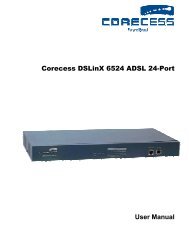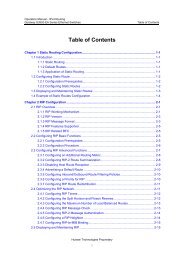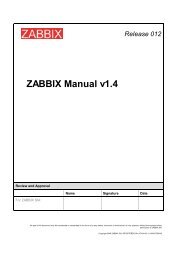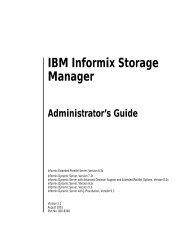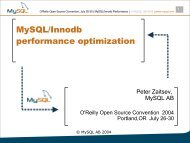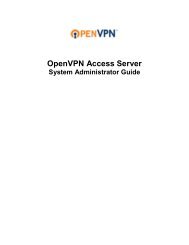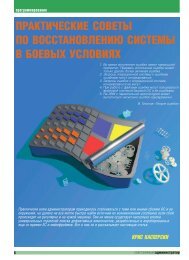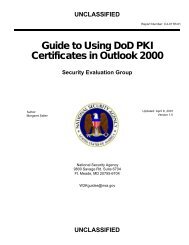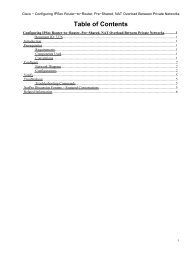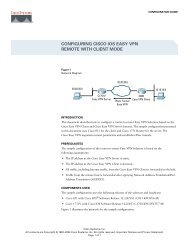Solaris Application Programming, 1/e - Chapter 4 - Parent Directory
Solaris Application Programming, 1/e - Chapter 4 - Parent Directory
Solaris Application Programming, 1/e - Chapter 4 - Parent Directory
Create successful ePaper yourself
Turn your PDF publications into a flip-book with our unique Google optimized e-Paper software.
4.4 PROCESS- AND PROCESSOR-SPECIFIC TOOLS 73<br />
time is the time between when the process started and when it completed. A multithreaded<br />
process will typically report a combined user and system time that is<br />
greater than the wall time. The tools do differ in output format. The tool timex<br />
can be passed additional options that will cause it to report more information.<br />
% time <br />
Example 4.30 Syntax of the time Command<br />
4.4.3 Reporting System-Wide Hardware Counter Activity (cpustat)<br />
cpustat first shipped with <strong>Solaris</strong> 8. It is a tool for inspecting the hardware performance<br />
counters on all the processors in a system. The performance counters<br />
report events that occur to the processor. For example, one counter may be incremented<br />
every time data is fetched from memory, and another counter may be<br />
incremented every time an instruction is executed. The events that can be counted,<br />
and the number of events that can be counted simultaneously, are hardwaredependent.<br />
Opteron processors can typically count four different event types at the<br />
same time, whereas UltraSPARC processors typically only count two. We will discuss<br />
hardware performance counters in greater depth in <strong>Chapter</strong> 10.<br />
cpustat reports the number of performance counter events on a system-wide<br />
basis, hence it requires superuser permissions to run. So, if multiple programs are<br />
running, the reported values will represent the events encountered by all programs.<br />
If the system is running a mix of workloads, this information may not be of<br />
great value, but if the system is performing a single job, it is quite possible that<br />
this level of aggregation of data will provide useful information.<br />
Assume that the system is dedicated to a single task—the program of interest—and<br />
the program is in some kind of steady state (e.g., it is a Web server that<br />
is dealing with many incoming requests). The command line for cpustat, shown<br />
in Example 4.31, is appropriate for an UltraSPARC IIICu-based system. The output<br />
is a way of determining which performance counters are worth further investigation.<br />
Example 4.31 Sample Command Line for cpustat to Collect System-Wide Stats<br />
$ cpustat -c pic0=Dispatch0_IC_miss,pic1=Dispatch0_mispred,sys \<br />
-c pic0=Rstall_storeQ,pic1=Re_DC_miss,sys \<br />
-c pic0=EC_rd_miss,pic1=Re_EC_miss,sys \<br />
-c pic0=Rstall_IU_use,pic1=Rstall_FP_use,sys \<br />
-c pic0=Cycle_cnt,pic1=Re_PC_miss,sys \<br />
-c pic0=Instr_cnt,pic1=DTLB_miss,sys \<br />
-c pic0=Cycle_cnt,pic1=Re_RAW_miss,sys



